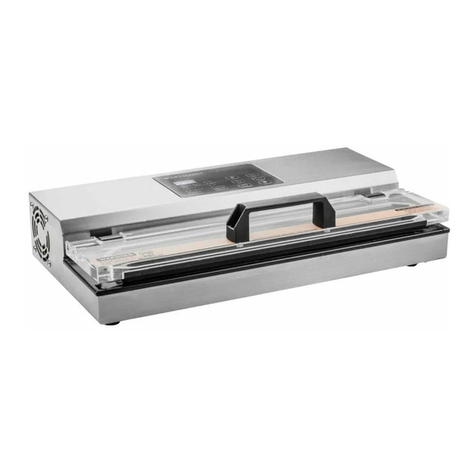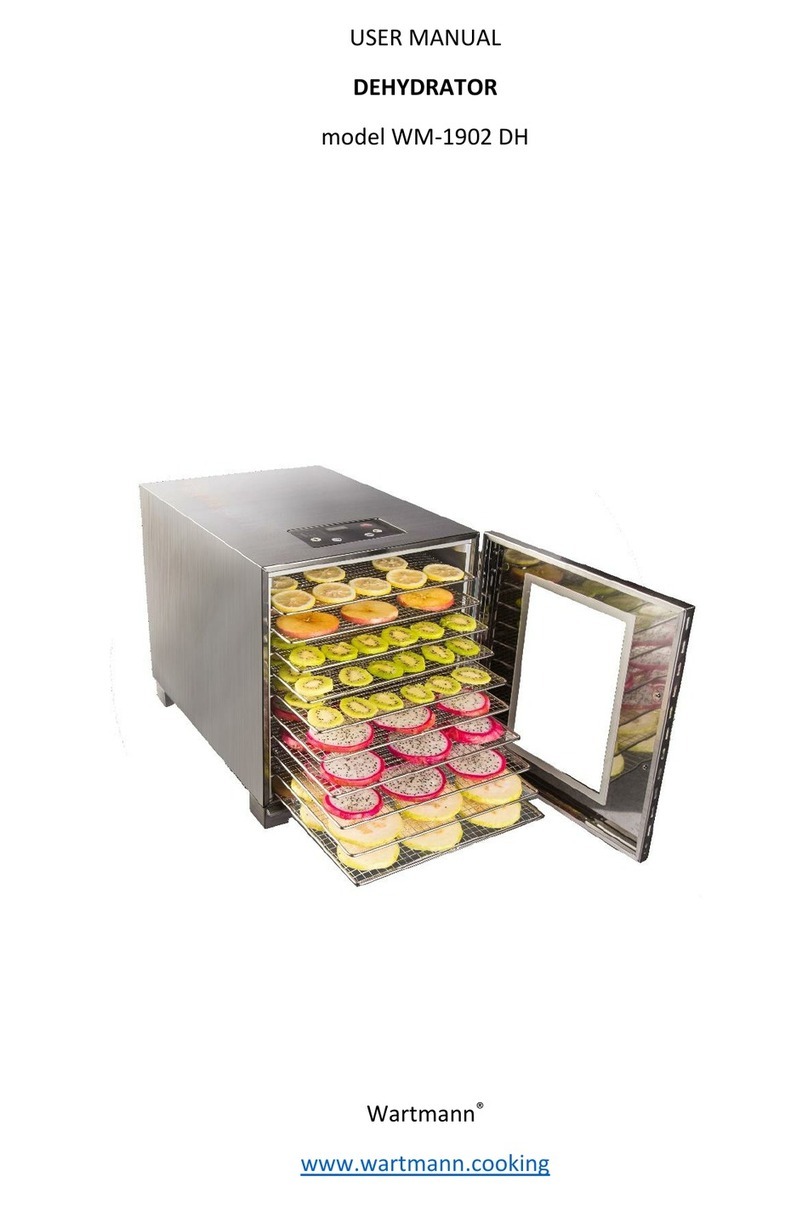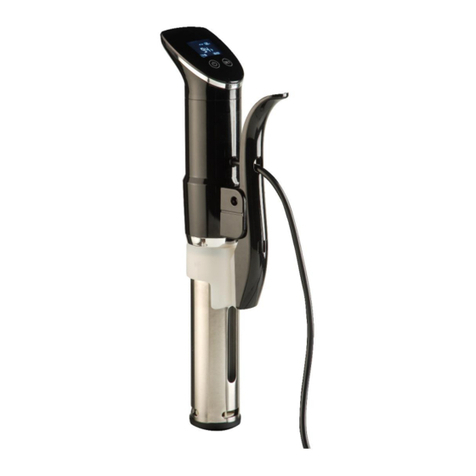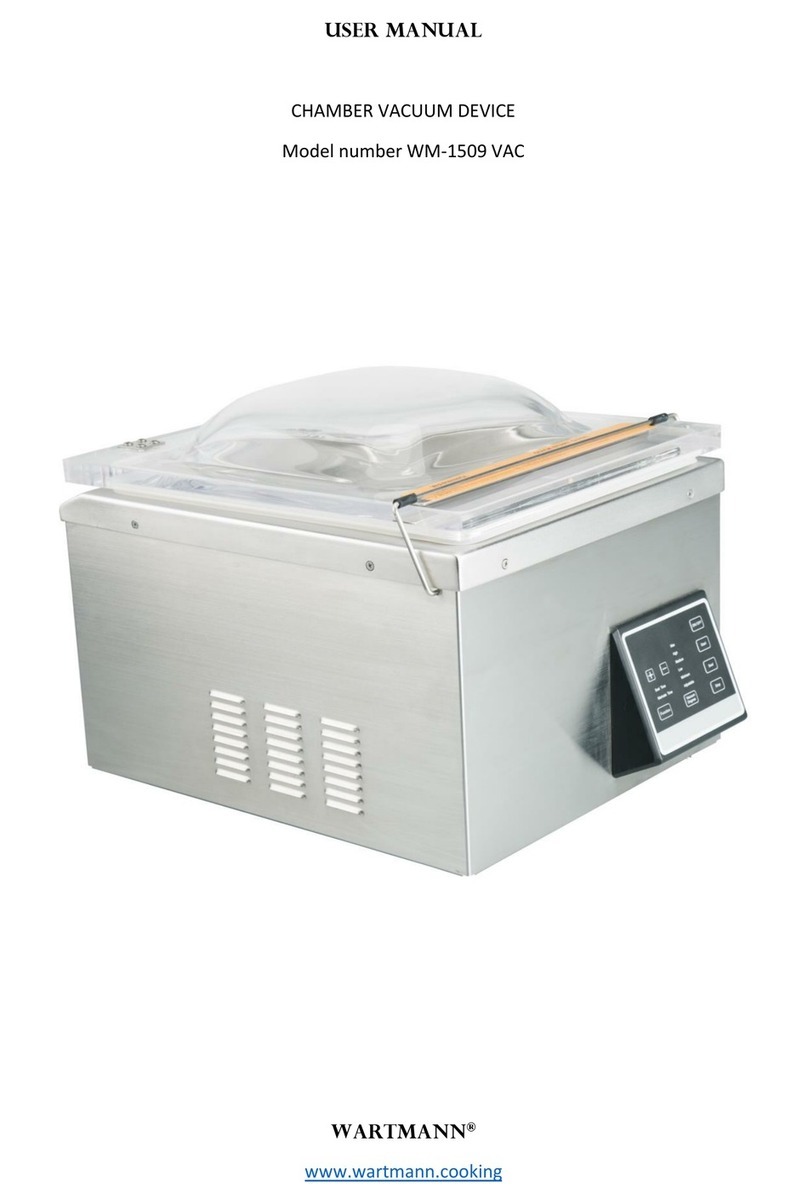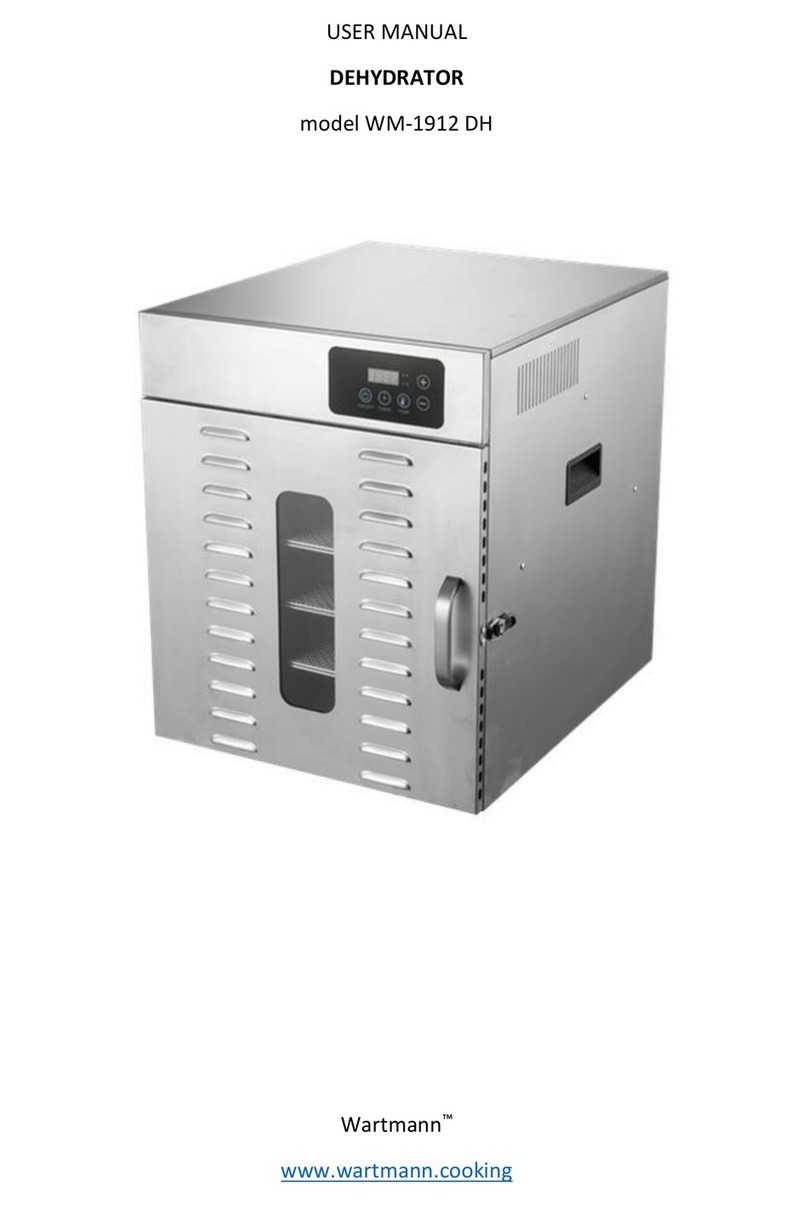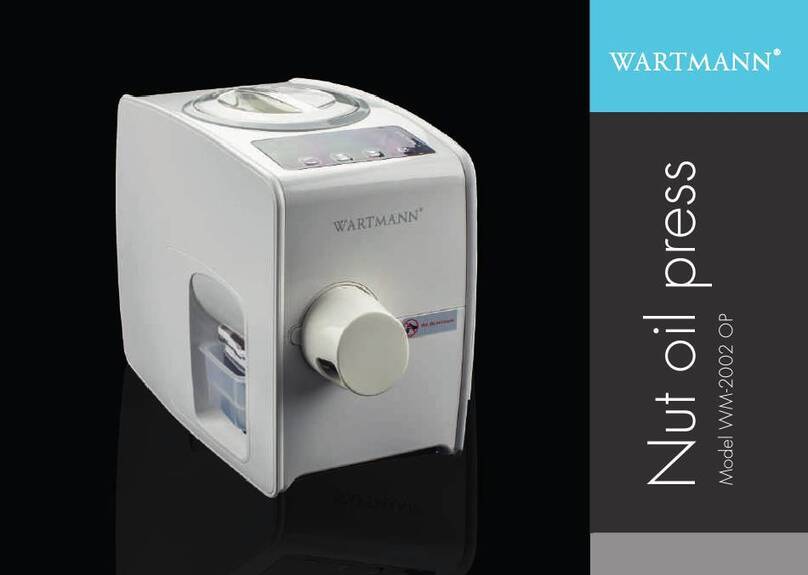
6
FOOD TREATMENT
Hygienic precautions for plant products
Always work hygienic and use only fresh products
that are properly cooled and stored until preparation.
Check if food is spoiled, before using it. Food that
is spoiled may contaminate your entire batch. We
recommend to only use fresh and if possible seaso-
nal food. Never use food that is marinated in alcohol
toavoid the risk of a fire or explosion.
Hygienic precautions for animal products
Dehydrating at medium range temperatures does not
kill pathogens. It is therefore important that any meat
or fish that is being dehydrated has been properly
heated first, as to illuminate the risk of a pathogen
contamination.
Meat should be heated to a temperature above
68 degrees Celsius for a longer period prior to
dehydrating.
A piece with a thickness of 5 centimetre should be
heated for at least 14 minutes at this temperature.
Thicker pieces require a longer time. Fish should
be heated until 90 degrees Celsius until flaky. Fat
should be removed from meat as much as possible.
Too much fat may cause unwanted dripping.
Food preparation
Food should be sliced to a thickness of 6 to 20 mm.
Meats slices should ideally not be thicker than 5 mm.
Fruit can best be soaked in a citric liquid, such as
lemon juice, for a few minutes to avoid the loss of
colour.
Vegetables may require blanching. This will inhibit
the enzymatic activity which causes loss of flavour
and colour fading. Cook the vegetables or place
them in the microwave until they are done, but still
a bit crispy.
Subsequently you immerse the vegetables in cold
water, stopping the cooking process. Next, dry the
vegetables with, for instance, a clean towel.
